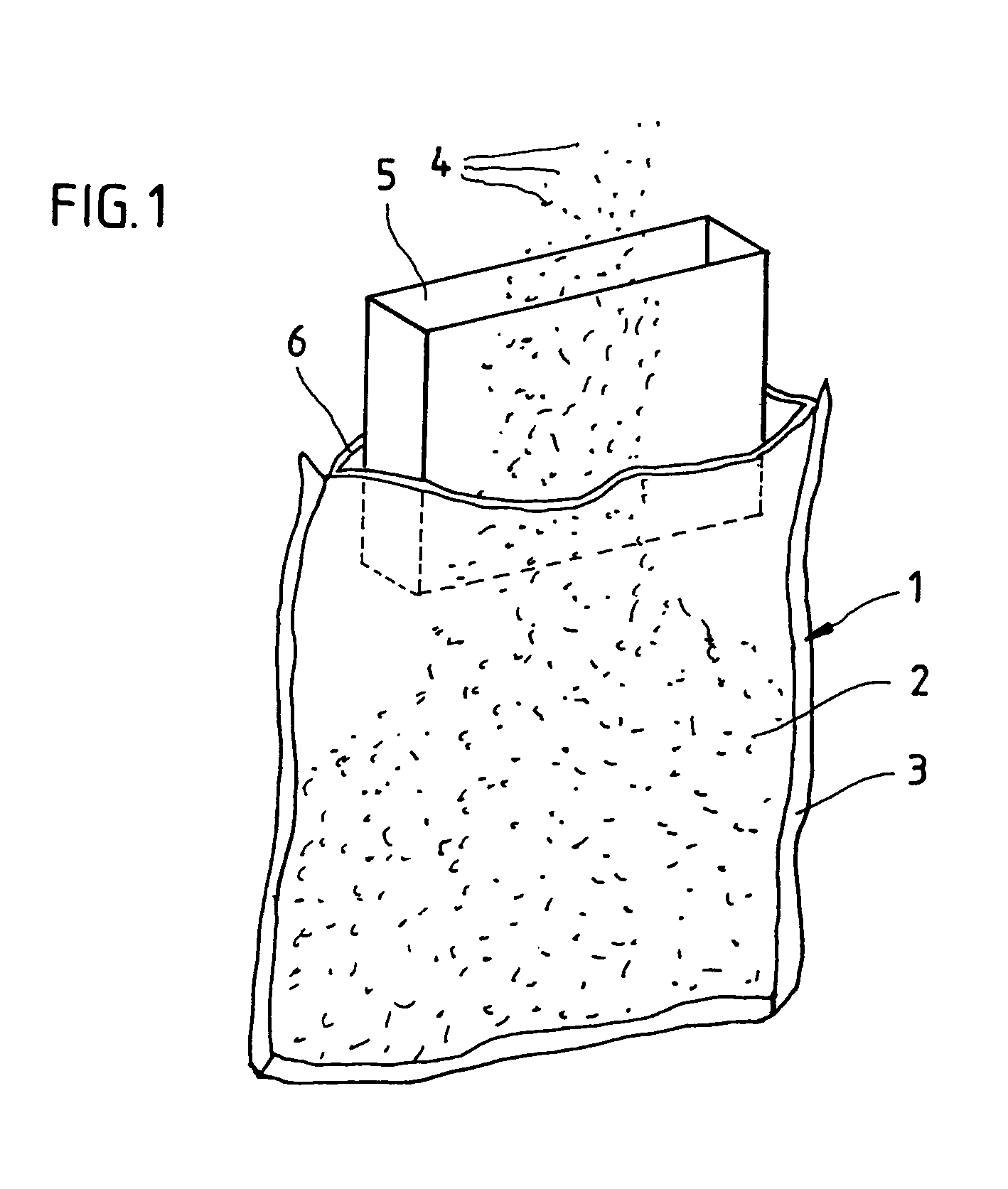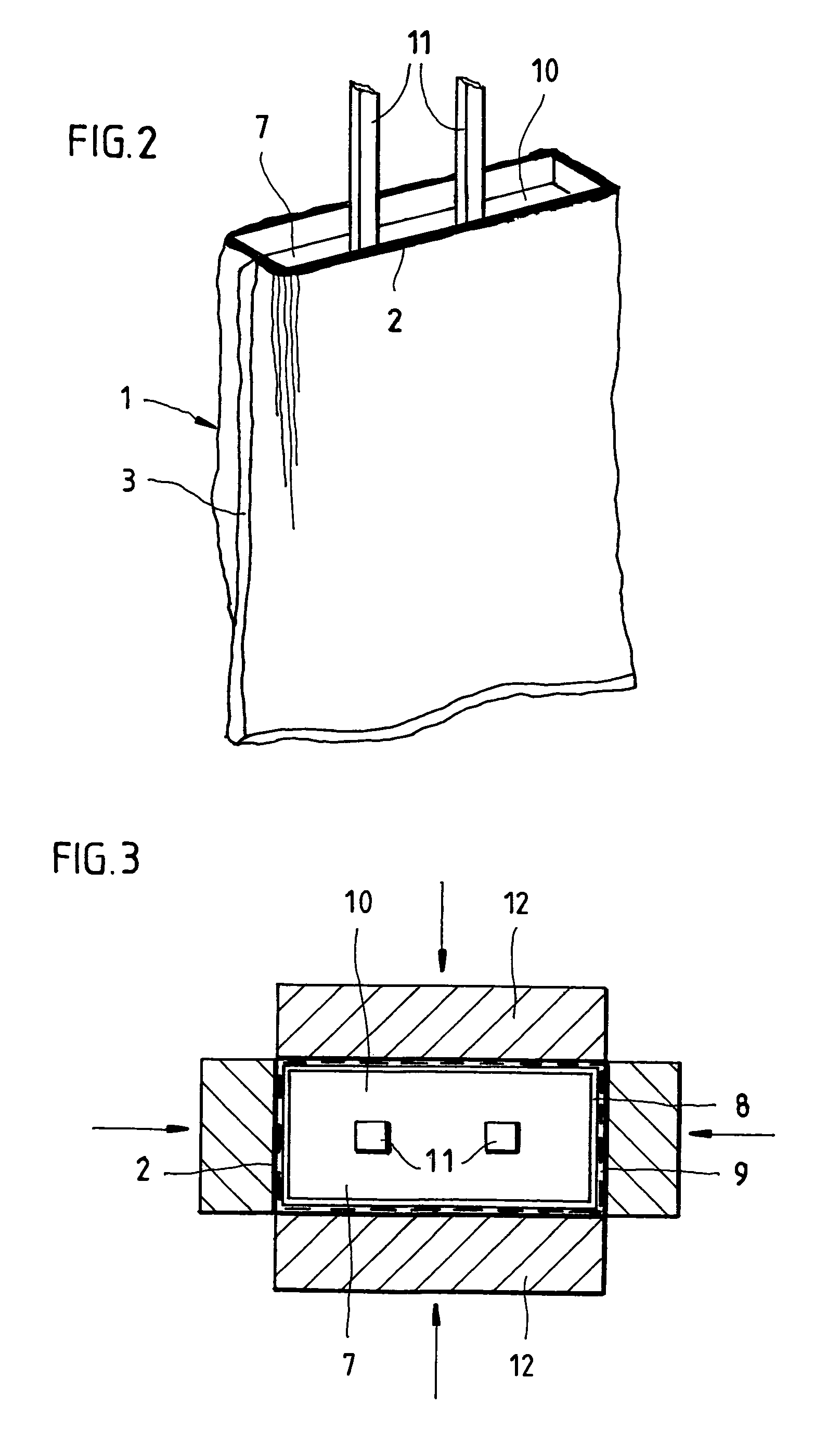Method for the production of a vacuum insulation element wrapped in a film, filled with powder
a vacuum insulation element and film technology, applied in the direction of wrapping/bundling articles, packaging goods types, bundling machine details, etc., can solve the problems of local overload and inability to produce vacuum insulation elements, and achieve the effects of easy handling, good evacuability, and evenly distributed loose powder
- Summary
- Abstract
- Description
- Claims
- Application Information
AI Technical Summary
Benefits of technology
Problems solved by technology
Method used
Image
Examples
Embodiment Construction
[0040]Into a flat bag 1, which is open on one side, 450 mm×470 mm in size, and made from two congruent aluminum composite films 2 which are welded together along several edges 3, 900 g of loose, pourable perlite powder 4 with a grain size of less than 0.05 mm are poured. A funnel 5, or similar device, can be used for this.
[0041]Subsequently, a trough-shaped polyester nonwoven fabric is introduced into an opening 6 in the film bag 1 using a spacer 7 made of metal, for example, with the dimensions 400 mm×30 mm×5 mm. The spacer 7 supports trough-shaped filter material 8, particularly a polyester nonwoven, which is coated on the provided adhesive surfaces facing the interior of the film bag with an adhesive film and enables a relatively low sealing temperature around 100° C. The spacer 7 is introduced until its top edge 10 is at a distance of about 65 mm below the top opening 6 of the film bag 1. The spacer 7 is held by rods 11 protruding from the top side 10.
[0042]Depending on the embo...
PUM
| Property | Measurement | Unit |
|---|---|---|
| grain size | aaaaa | aaaaa |
| distance | aaaaa | aaaaa |
| pressure load capacity | aaaaa | aaaaa |
Abstract
Description
Claims
Application Information
 Login to View More
Login to View More - R&D
- Intellectual Property
- Life Sciences
- Materials
- Tech Scout
- Unparalleled Data Quality
- Higher Quality Content
- 60% Fewer Hallucinations
Browse by: Latest US Patents, China's latest patents, Technical Efficacy Thesaurus, Application Domain, Technology Topic, Popular Technical Reports.
© 2025 PatSnap. All rights reserved.Legal|Privacy policy|Modern Slavery Act Transparency Statement|Sitemap|About US| Contact US: help@patsnap.com



